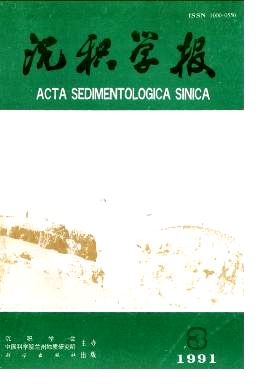Biogenic Sedimentary Structure and Its Environmental Significance in Pakawau and Kapuni Group, Taranaki Basin, New Zealand
- Received Date: 1990-05-10
- Publish Date: 1991-09-10
Abstract: Taranaki Basin is located in the northwest of the North Island in New Zealand. It was formed in the Late Cretaceous The maximum thickness of the sediments reaches to 11,000m. Taranaki Basin is one of the most prospective areas for petroleum in New Zealand, up to date, four oil (gas) fields have been drilled out, the crude oil show general features of terristrial oil. On the base of present investigation results, it is suggested that Pakawau and Kapuni Croup, which were deposited respectively in Late Cretaceous and Paleoecene-Eocene Epoch, are the possible source rocks. Pakawau and Kapuni groups are mainly composed of the deposits of continental facies and of marine and continental interactive facies. Biogenic sedimentary structures are very developed in the drilled cores of these two groups. Their types of causes of formation and developing degree may be regarded as the mark of oxygen content in sediments. The results of investigation show that the oxygen content is lower than 0.1-0.2ml/1 in coal bed and carbonaceous mudstone with high content of organic matter and has not distroyed by boiturbation; and medium in muddy siltstone and silty mudstone with very developed biogenic structures and intergrowth of bioturbation and small scale borrows, while abundant in coarse clastic rocks with large scale vertical burrows. According to the results of the above investigation and combining sedimentary sequence and primary sedimentary structure sequence, we carry on a comprehensive explanation of sedimentary environment to the partial cores of wells Tane-1 and Kapuni-8. Well Tane1 is taken as an example. This core section belongs to Pakawau Group, the lithologic character is fine-coarse sandstone at the bottom and turns gradually into siltstone, silty mudstone, carbonaceous mudstone and coal bed upwards. The relevant primary sedimentary structures are massive bedding , medium scale cross bedding, compound bedding of lenticular and wavy bedding, small scale cross bedding, horizontal laminated bedding, homogeneous bedding upwards. The regular change of primary sedimentary structure and the grain size character fining upwards are commonly composed of the typical normal fining upwards sedimentary sequence. This kind of sequence is just the product of hydrodynamic change of fluvial sedimentary system. Based on the characters of lacking of fluvial lag deposits at the bottom of sequence and thick over-bank fine sediments in the upper sequence, this core section should belong to the product of later- al migration of meandering stream point bar and of accretion of over-bank fine sediments upwards. Biogenic sedimentary structures change regularly from weak to strong from bottom to top. However, biogenic sedimentary structures are not developed in coal bed and carbonaceous mudstone in the upper of the sequence and in coarse sandstoin in the lower of the sequence. The former is because of the oxygen-popr environment, although the latter is oxygen-rich, the strong bottom washing made organisms difficult to survive. Large amounts of biogenic sedimentary structures are formed in muddy siltstone with medium oxygen content. Therefore, the change process of oxygen content is from strong to weak in vertical direction in the sediments of sedimentary sequence of meandering stream point bar. The oxygen content in coal bed and carbonaceous mudstone may be lower than 0.lml/1.
| Citation: | Jin Huijuan, Lin Hejie. Biogenic Sedimentary Structure and Its Environmental Significance in Pakawau and Kapuni Group, Taranaki Basin, New Zealand[J]. Acta Sedimentologica Sinica, 1991, 9(3): 40-49. |






 DownLoad:
DownLoad: